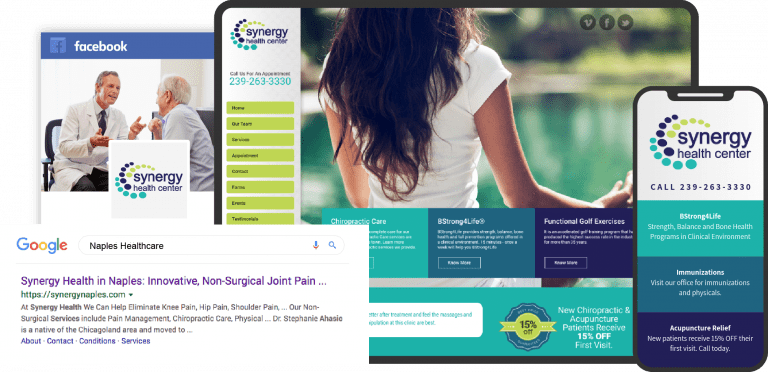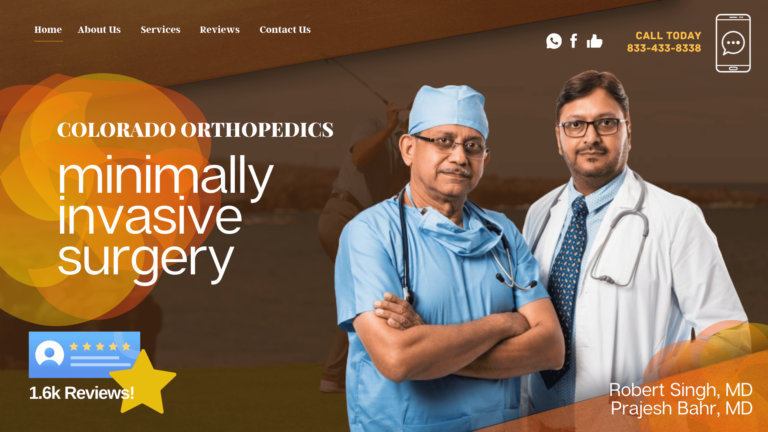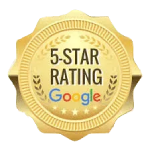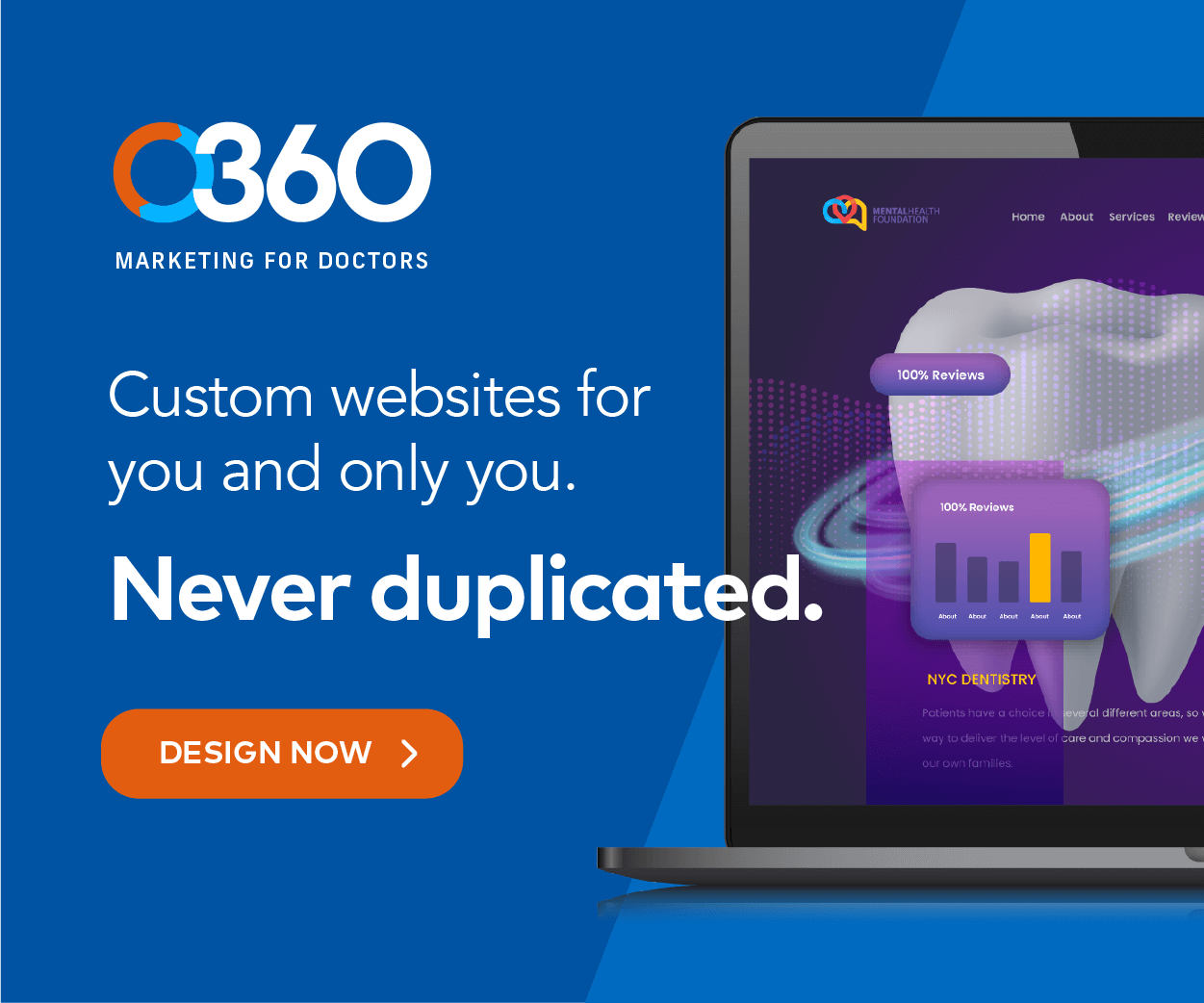How much does a healthcare website cost?
Effective medical web design services can cost around $1,000 to $2,000 in initial fees and between $50 to $100 in monthly fees. Some companies provide templates with no setup fees and low monthly payments. However, we struggled to find one good for a small business private practice. A custom website is a different story.
The range starts at around $5,000 to over $10,000, depending on the type of web page, specialty, and scope of work. Monthly fees for custom websites usually start at $100 per month. Higher monthly fees include some social media and marketing services and ensure your website gets results. The option of semi-custom websites that cost something in between is also available.

But, the real answer to what you should expect as the right price for your new website is that ‘it depends.’
When you run a private practice, such as dental, OBGYN, dermatology, or pediatrics, you have many tasks to manage.
• Interviewing and hiring staff
• Finding the right DAs and nurses to add to your team
• Selecting and furnishing the right office space at the right price
• Ensuring all computer and insurance billing systems work smoothly
• Selecting the right advertising media
Providing top-tier medical service to your patients is a central concern.

In addition to all that, you also need to figure out a budget to build a website for your practice. What is the expected investment to create a website with a custom design? Should you consider finding project managers in your team to do the design in-house? Will this investment pay off in a user-friendly design that improves patient retention and increases revenue?
With everything you must juggle, you may let web design fall by the wayside and go with a default choice. However, a solid online presence is critical for a modern, growing medical or dental practice of any specialty.
You know you only get one chance to make a great first impression. In today’s digital age, your website will often be that first impression.
 Do your homework, research all available options, and weigh the pros and cons.
Do your homework, research all available options, and weigh the pros and cons.
How much do medical web design services cost?
The real question: how much to invest?
Determining the appropriate amount to invest in medical web design services is tricky. The result should be a design that leaves your patients confident in your experience and qualifications. They should know you can solve my problems and think, “I’m calling and booking an appointment now.”
We suggest you consider your website an investment to figure out how much to invest in a custom website design. Investments are different from consumer expenses, like buying hats, football tickets, or pizzas, in that they provide a return. You are investing money with the hope that this smart choice will give you more income over time.

See, the truth is that your website doesn’t exist to look “pretty” for its own sake but to serve a valuable purpose:
- To connect prospective patients
- To your practice
- To welcome and entice them,
- To convert them from prospective patients into satisfied, honored, and loyal patients of your practice.
The better the website, in other words, the better the return on investment.
In this article, I will explain the benefits of two popular web design options medical professionals use. People commonly choose these options because they are effective.
You can compare the merits of these medical web design options. When you finish comparing sites, you can reach your own conclusion on how much you’d need to invest in your practice.
To simplify it, I will tell you the story of Dr. Adams and Dr. Baker. Both of them needed new websites. They practice in the same city, are about the same age, and are at the same career stage. They have the same number of patients and the same quality of office staff.
The only difference, and the only one we’re interested in, is how much they invest in medical web design services. Dr. Adams spent $1,000 on a simple template and managed it himself. Dr. Baker spent $10,000 on a custom site and had a company manage it for $100 monthly.
Three options
Dr. Adams has decided it’s time for his clinic to get a new website. He knows how important this investment is to his practice’s growth, but he doesn’t know which web design route to take.
From researching online, he realizes he has three broad options:
Template Website
Option 1 (least upfront investment, least professional help):
Dr. Adams could use a “do it yourself“ website builder. He discovered numerous medical web design services through online advertisements and YouTube videos. Medical professionals often choose this option as it requires the smallest upfront investment. This option requires the least amount of money from him but has useful tools such as dragging and dropping elements.
However, it offers the least professional advice, feedback, and custom features. Ultimately, it means a lot of time learning the tool and developing his website independently. His practice is doing well, so he thinks he should invest more than this.
 Example of the template websites that belongs to different dental practices
Example of the template websites that belongs to different dental practices
Option 2 (greatest upfront investment, most professional help):
His associate Charlie discussed his work at a dinner party with wine and plates of grilled salmon and vegetables. Charlie explains that his business is custom website and app design, and he provides medical web design services as well.
Charlie explains that he and his design team can have meaningful talks with many clients. These discussions help identify the features and visually appealing styles that best grow their business. Ultimately, Dr. Adams chose to emphasize the strong image of professionalism.
He believed that expert design would impress potential customers. He wants that level of expertise on his side and his website to make his practice stand out. But Charlie’s cost estimate of $10,000 makes Dr. Adams hesitant.
Option 3 (the “middle ground”):
As a prudent shopper, Dr. Adams chooses the option that seems to offer the middle ground: he pays $2,500 for a semi-custom template.
Semi-Custom Website
After receiving a short email survey, Dr. Adams talks to one of the company’s designers. The designer recommends a template for Dr. Adams to use. The designer tells him this template is the best for a medical practice. He adds that every doctor he has worked with has used it.
Dr. Adams thinks there were only a few options. He realizes that other businesses, including shoe stores, restaurants, hair salons, and tour guides, have often used this template.
However, the layout has many pictures he provided of himself, his staff, and his office. It does look good, with his name emblazoned across the top of the page in a font the designer strongly suggested.
And he got this site up and running and looking pretty good for only $2,500!
However, Dr. Adams does have some concerns. Does the site properly represent the image and culture of his practice? Does it convey its value on an emotional and technical level?
It doesn’t effectively highlight the expertise in procedures he most wanted to emphasize. The layout has nothing distinguishing it from other sites using the same template. Exploring the default drop-down menus, tabs, and slideshow pages reveals them to be exceedingly generic.
He remembers talking to Charlie at the dinner party. He thinks about the many custom projects his company has finished recently. This work was for dentists, hospitals, and even health insurers. He thinks about that friend’s medical web designs and how unique, practical, and perfect they all looked for the people they represented.
He wonders if he should have invested more in this critical part of his practice.
Back to the results of Dr. Adams’ website in a moment.
But first, how did it go for Dr. Baker?

Fully Custom Design
Dr. Baker learned of a fully custom web design service through his online research. He looked at their value proposition, history, examples, and pricing. A fully custom medical web design services package from them would cost about $10,000, much more than the “off-the-shelf” options that cost $1,000.
Dr. Baker considers the potential return on investment and chooses this $10,000 design service. He considers how much money the average patient brings to his practice monthly and yearly.
He also considers the revenue over five and ten years. He compares this to the upfront cost of a custom, high-quality website. He begins to visualize how much bigger his return on investment can be. Ultimately, he decides it’s time to invest in his business.
Dr. Baker’s conversation with the designer is engaging and productive. She asks him many questions about himself, his work, the value of his practice, and other steps her services include. The doctor can then focus on the details of his specialty.
The website can highlight where he makes the biggest difference in his patients’ lives. It can also show what his patients like most about him and his practice.
The designer asks questions that the doctor may not have considered. This helps the doctor focus on the graphic design elements. The designer clarifies what the site should emphasize, including making it SEO-friendly.
During the design process, Dr. Baker provided a significant amount of input into the results. Ultimately, he was amazed by the sleekness, uniqueness, and practicality of his custom site. He decided it had all been worth the additional investment in medical web design services and even included an online store.
The designers optimized the website for multiple screen sizes, including PCs and mobile devices. Its SEO (search engine optimization) helps reach more potential patients. It loads quickly, which is useful for patients, and it fully represents his clinic culture. When Dr. Baker experiences the results, he feels he has already gotten his money’s worth!
Results for the two doctors:
Both doctors earned new patients and new revenue because of their new websites.
But the difference in quantity was tremendous.
Dr. Adams gained $20,000 in new patient revenue that year with his semi-custom site. This was because new patients found him through the website. This increase in profit represented a nice return on his $2,500 investment.
Dr. Baker spent $10,000 on his custom website, which brought in about eight times more new patients. At the end of the year, he discovered his site had earned him $160,000 in new revenue that year.
Which equation and result would you prefer for your practice?
Before you answer, remember that the $9,000 difference in cost for the fully custom website is a one-time investment. You’d realize an immediate profit if you only earned $7,501 in new revenue that year because of the site. And that’s being conservative with the value a custom website can bring.
From a business point of view, web design investments for medical practices can lead to a great ROI. This is easier to achieve than in many other businesses.
Dental implants and cataract surgeries make much more money than selling a couch or fixing a computer. However, the cost of starting a good website is usually similar to that of other types of businesses.
If you prefer to “see it for yourself,” I suggest browsing the example custom-built websites below. They may help you begin to envision how your own practice’s website can look.
I hope the stories and examples above make you think about how much you should invest in your practice’s website. I suggest that you carefully think through these questions:
- What makes your practice unique?
- What services do prospective patients need to know about?
- What do patients love best about your practice?
- Who is your ideal patient?
Now, how is your website going to convey all that?
Related Blog Posts














